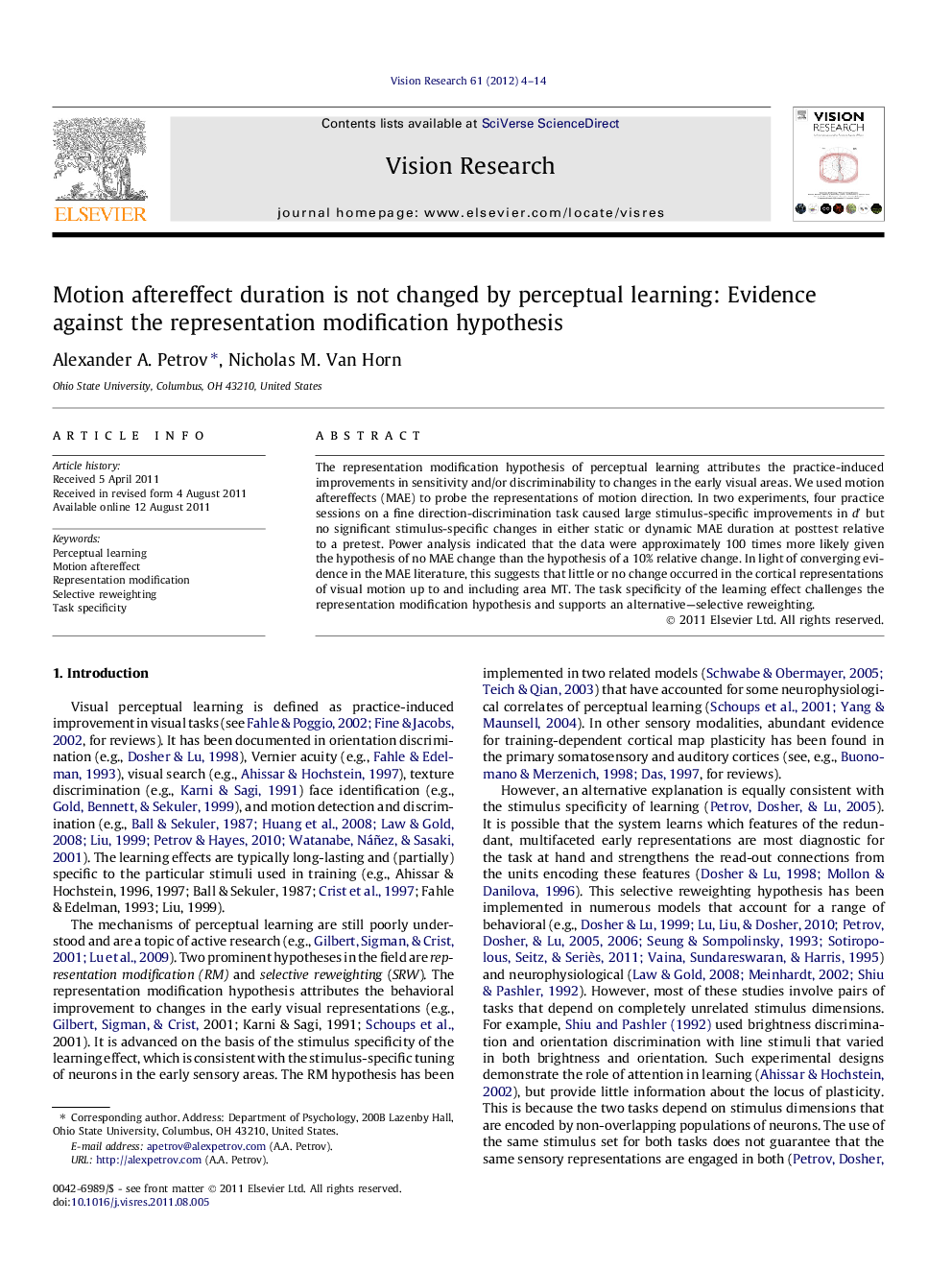| Article ID | Journal | Published Year | Pages | File Type |
|---|---|---|---|---|
| 4034002 | Vision Research | 2012 | 11 Pages |
The representation modification hypothesis of perceptual learning attributes the practice-induced improvements in sensitivity and/or discriminability to changes in the early visual areas. We used motion aftereffects (MAE) to probe the representations of motion direction. In two experiments, four practice sessions on a fine direction-discrimination task caused large stimulus-specific improvements in d′ but no significant stimulus-specific changes in either static or dynamic MAE duration at posttest relative to a pretest. Power analysis indicated that the data were approximately 100 times more likely given the hypothesis of no MAE change than the hypothesis of a 10% relative change. In light of converging evidence in the MAE literature, this suggests that little or no change occurred in the cortical representations of visual motion up to and including area MT. The task specificity of the learning effect challenges the representation modification hypothesis and supports an alternative—selective reweighting.
► Motion aftereffect (MAE) probed the early cortical representations of visual motion. ► Experimental design: MAE pretest–discrimination training–MAE posttest. ► Results: Large stimulus-specific improvement in discrimination (d′). ► No significant stimulus-specific changes in MAE. High statistical power. ► Evidence against the representation modification hypothesis of perceptual learning. Task specificity.
